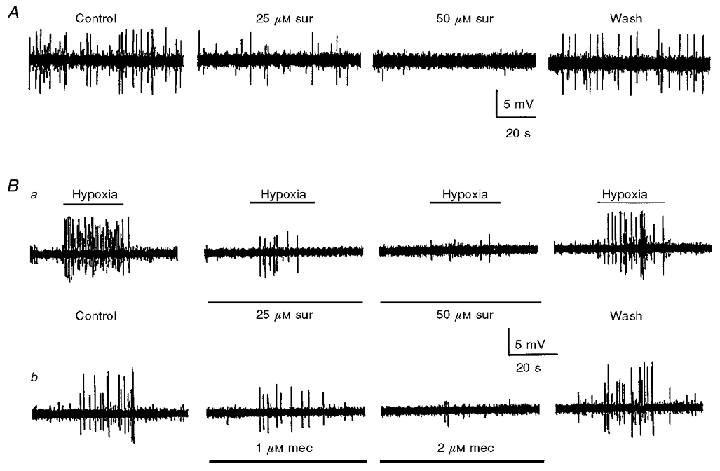Figure 9. Effects of receptor blockers on spontaneous and hypoxia-evoked extracellular spike discharge recorded from chemosensory units in the isolated rat carotid body-sinus nerve preparation in vitro.

A, one of three examples where the spontaneous discharge in the carotid sinus nerve was (reversibly) inhibited in a dose-dependent manner by suramin; spike frequency was ≈0.6 Hz (control), 0.2 Hz (25 μM suramin), ≈0 Hz (50 μM suramin), and 0.4 Hz (wash). Ba and b, the effects of increasing doses of suramin (25-50 μM) and mecamylamine (1-2 μM) on the hypoxia-evoked extracellular spike discharge in the same preparation. Note that each blocker, acting alone, produced a graded reduction in the frequency of hypoxia-induced discharge and the effect was reversible. The hypoxia-induced spike frequency in Ba was ≈6 Hz (control), 0.5 Hz (25 μM suramin), 0.1 Hz (50 μM suramin), and 4 Hz (wash); in Bb the frequency was ≈4 Hz (control), 0.4 Hz (1 μM mecamylamine), 0.1 Hz (2 μM mecamylamine), and 4 Hz (wash). The combined presence of 50 μM suramin and 2 μM mecamylamine also abolished (reversibly) the hypoxic response in this preparation (not shown). For each row of traces in Ba and b, the hypoxic stimulus (PO2 = 5 mmHg) was applied during the period indicated by the upper horizontal bars.
